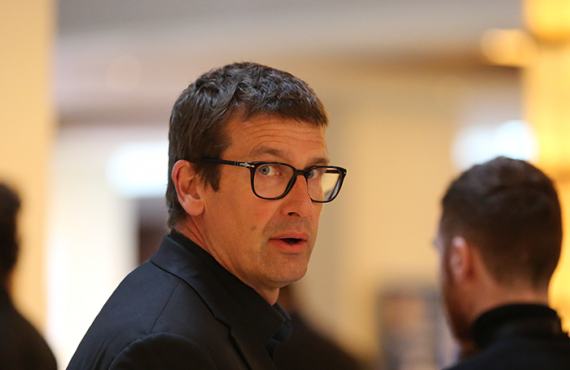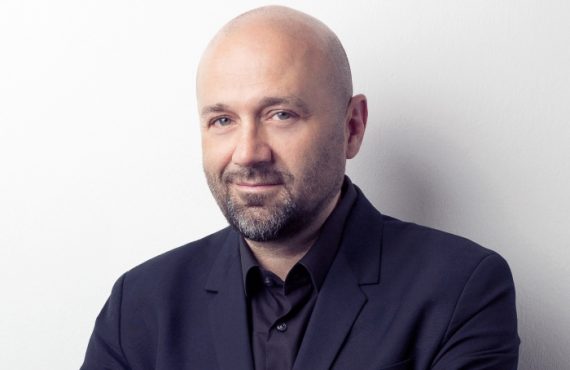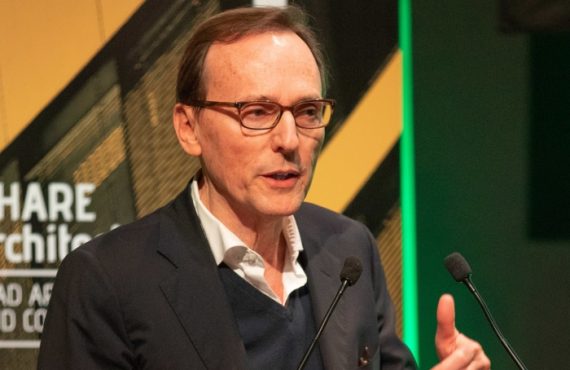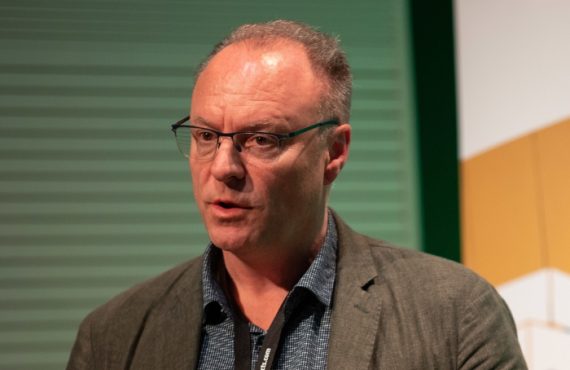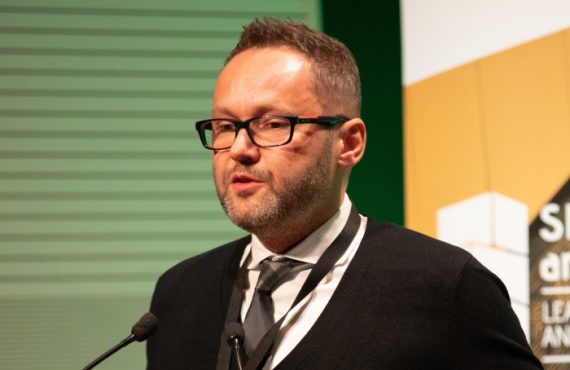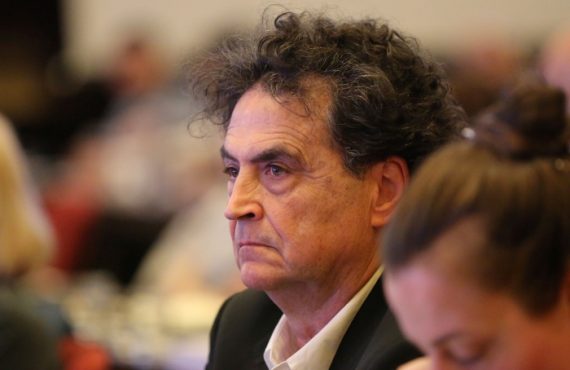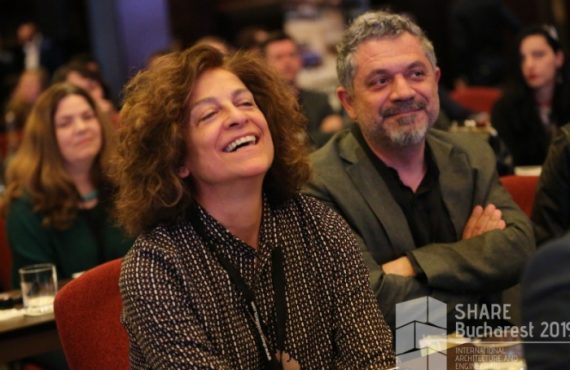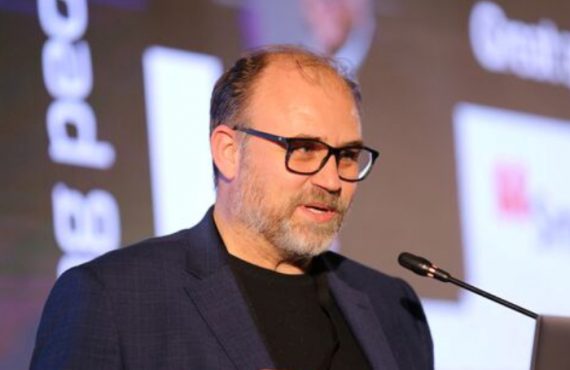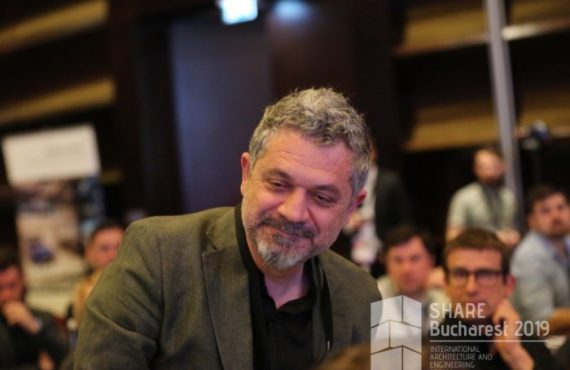“When I was at OMA we had a small PR team and today at MVRDV I have editors from big media that work for me. We now pay for photographs, writing and we’re doing work that in the past was done by journalists in the editing studios. Of course, it is expensive and while you can’t afford to pay for it as a small office or firm, you should still do these things by learning how to communicate, to write and deliver your own creations in a way that attracts people.“
Andreea Robu-Movilă: You worked with OMA and shaped the image of MVRDV and as we all know, you really did a great job! I know you are not an architect, but how did architecture influence your personal development?
Jan Knikker: I should have become an architect, probably. When I was a kid I was always looking at buildings. I wouldn’t do anything but play with LEGO, but I didn’t have any technical talent.
A.R.M.: Maybe you just believed you were that way.
J.K.: I visited some architecture schools and thought it was too technical for me. I took language classes and journalism instead and then I had my first journalism job in France where I only wrote about architecture and real estate. I went back to Holland and they didn’t need an editor speaking both German and French, so I became a bit desperate about what I should do. Even though I had no job, I said no to at least four different positions until there was this offer from an architecture firm, OMA, to become a secretary for Rem Koolhaas. After my first interview, I got a second one with Rem Koolhaas himself and he told me ‘You’re not a secretary! What are you?’ ‘No I’m not. I’m a journalist’. ‘Oh, I used to be a journalist!’ he replied. Then he said ‘You should do my communication’ and hired me. My job was easy, I basically opened the door at OMA and helped with all these highly dedicated people there, making them successful – when I came there were 45 people, but when I left nine and a half years later there were 260. I think it’s very important to communicate architecture differently because many architects are highly educated professionals who talk in a way that people cannot grasp. So I had to teach the architects to talk like they would perhaps talk to eight year old children and have more patience and care when explaining their projects. It’s very easy to retreat to an intellectual domain and not share what you have learned, but architecture is useless the moment you’re not using it. I saw this Prada Shop in New York – OMA worked on it for two or three years and then suddenly it was built – but when we entered the shop it felt actually quite disappointing to me. The theory was perfectly executed but I felt it was very cold and unreal. By the end of the day the goods and the people arrived and suddenly it was fantastic and it made sense. That shows that they had actually made a really good work of architecture because it interacted with the clothing, with the spirit of the brand and with the people who used it. This is something that you have to communicate to people – the added value of architecture is not so much the pure intellectual idea, but it’s the way the idea works.
A.R.M.: What were your decisions that were significant for branding an architectural firm?
J.K.: I think getting it out of the architectural ghetto. Architecture media is very important – we like them a lot and we are good friends with them. But you also need to talk to people outside of architecture, and that is becoming increasingly important… For example, in Europe a neighbour can stop your project, which can cost you millions if you don’t explain to the neighbour in normal words why the project is a good idea. We have more and more public participation and see that local media is becoming more important. The media landscape is changing too – we suddenly have to look at social media; when I started my career there was no such thing as social media and now we have a social media editor in our office.
A.R.M.: How do you perceive the change in architecture’s relevance during time?
J.K.: I think the relevance hasn’t changed, but maybe the way that we look at it has. When I was young, architectural relevance was mostly about being recognised for housing and social environments. I think that’s still valid, but in the ‘90s there was this idea that architecture had to be iconic and it became almost like a luxury handbag. However, iconic buildings are really important for the city. Like the Colosseum in Rome – it was not built as an iconic building, but with a certain function. I think we always have to raise buildings for their function and make it contextual and then the final product could perhaps become an iconic building.
A.R.M.: Designing something spectacular shouldn’t be in the philosophy of the project from the beginning.
J.K.: No, it would be very shallow, I believe.
A.R.M.: So you would advise an architectural firm to focus on better communication with the general public.
J.K.: If architects have a great idea they need to also be able to convince others that it is, indeed, a great idea and do so in the language of the people they meet. If you have the neighbour, you speak the language of the neighbour, if you have the mayor, you try to speak his language and if you have the developer, you talk about something financial, probably. Architecture is often multi-layered and complex, so you always have to find the right arguments for why the project is good for different groups.
A.R.M.: How would you design the profile of the future architect?
J.K.: First of all, we want them to be idealistic. We are in an emergency and we need to transform the construction industry in order to help end climate change. Therefore, we need certain idealistic proposals and want our architects not to be engaged with style – but we want them to think about how to protect the planet. On top of that, they need to have an approach that is social, close to the human scale and all these other complexities. We also want young architects to be critical and to have an opinion. Architecture is teamwork: in our office it is not the case that the founder makes the sketch and the team executes it – no, we have a social process together with the architect, the engineer and the users. This means the entire team is asked to come up with ideas and participate. An intern at our office will not print books or make coffee, but he or she will be part of the team and engage in the process. This part is extremely important.
A.R.M.: How did architecture change you?
J.K.: I started to understand buildings that I hated when I was young. Now I walk through Bucharest and I see buildings that people classify as bad, but in fact the architect did his best and the building is not maintained. I think you understand what buildings are about at a certain moment and you develop a taste – and the taste is expensive and that’s bad [laughs]. I also became more idealistic about the city and I can get really angry when I see for example a shopping centre built on the high street next door to the old town.
A.R.M.: So you developed critical thinking in the sense of analysing and understanding the context.
J.K.: Yes! You cannot walk through a city in an innocent way anymore – it’s over [laughs].
A.R.M.: What is your main source of happiness in architecture?
J.K.: Buildings are places that can make you extremely happy. I’ve never had a day that I went into our office thinking it would be a bad one. We made ourselves a wonderful office, we have meeting rooms that are monochrome orange or light blue – depending on your mood you can move into the orange room or the blue one and it’s really a place that makes you happy. Architecture really has the power to change your day – it’s a very influential discipline, it can change people’s lives for the better.
A.R.M.: Does MVRDV have a secret utopia for the future?
J.K.: It’s not secret [laughs]. Of course, we want to address the climate change – we want to have a society where everybody is happy and prosperous, and we know architects are only a small part of it, but we can at least provide the spaces for these happy communities.
A.R.M.: Do you perceive any shift in paradigm regarding the role of the architect in society?
J.K.: Yes! Architecture changed from being an engineering discipline into a genius discipline where the God would make his sketch and then it would be built, and today it’s more like a social discipline in which the architect comes up with the design – in our case it’s teamwork – and puts it through all kinds of stakeholders in an endless stream of communication. It has also become a more feminine discipline – in Delft University half of architecture students are women, and this is a technical university, which often has a gender misbalance. People are trying to find out why architecture has become more appealing to women and the belief is that it is a more communicative or mediating discipline these days, although this might still be a sexist view.
Moreover, at MVRDV we make concepts. We are an idea factory, so concept-making is our core business and we are talking about concepts all the time, but they are always influenced by all the disciplines that you mentioned.
A.R.M.: Do you think that artificial intelligence will shape the field in any way?
J.K.: Yes! And I hope it will be fantastic. You can see it in a negative way, but we like to stay positive. We made a design for a building in Amsterdam and we ‘fed’ it with softwares which optimised it. Therefore, it became more feasible and it would not have been possible without the help of artificial intelligence. We already have three or four buildings that we couldn’t have realised in the old way, but only by using this new technology. Probably everything that Zaha Hadid Architects do also falls into this category.
A.R.M.: What has greatly influenced your evolution ?
J.K.: Being told to do communication by Rem was a really good advice because it changed my life. I think I admire Thomas Heatherwick a lot because he is a designer who became an architect, although he has been heavily criticised for his latest work in New York (“Vessel”). I think his architecture makes people dream and feel very happy – that’s a very strong quality!
When I started working in architecture communication we had very strong magazines. Domus is one of the latest that still has a big editing team, but many of the large architecture magazines have died.
A.R.M.: This happened because of digital media.
J.K.: Yes, it is because of digital media as advertisement money goes to the largest companies like Google. For example, the architecture critic from The New York Times was flown in first class to Bilbao to write 6000 words for the newspaper, whereas today we can see any project for free on Dezeen . When I was at OMA we had a small PR team and today at MVRDV I have editors from big media that work for me. We now pay for photographs, writing and we’re doing work that in the past was done by journalists in the editing studios. Of course, it is expensive and while you can’t afford to pay for it as a small office or firm, you should still do these things by learning how to communicate, to write and deliver your own creations in a way that attracts people.
A.R.M.: Are you still working with Domus?
J.K.: Yes, Winy Maas is guest editor and I am his deputy. They still have a large editing team and are somehow comfortable because they have a lot of subscribers. However, during the economic crisis many magazines went bankrupt because people stopped buying them and the advertisers stopped advertising.
A.R.M.: Are you still writing as a journalist?
J.K.: Yes, of course! I think it is really important to keep doing what you do and discuss your own work even if nobody else is interested in discussing about it [laughs].
A.R.M.: Le Corbusier wouldn’t have been Le Corbusier if he hadn’t put his words on paper and made people understand his vision.
J.K.: Le Corbusier was a marketing genius – Mies van der Rohe as well! There is a wonderful piece of research by Beatriz Colomina in which she wrote about how the early star-architects were actually doing their own marketing in a very good way. That is why they are so widely recognized, basically. There’s no point in being a great talent and not telling anybody!
A.R.M.: Do you still analyze other buildings or some critical points referring to other individuals?
J.K.: I think it is crucial to be critical of all the mediocre and bad architecture that is built all the time and never ever discussed, because good, new, everyday buildings don’t make it into architecture magazines and nobody cares. But then a few ‘starchitects’ are the centre of attention because they compete against each other in this crazy system and say nasty things about each other’s work.
A.R.M.: This is also a form of publicity – even if it is in a good or a bad way [laughs].
J.K.: Of course! That is true, but I think we should be friendly to each other and show more respect.
A.R.M.:So do you encourage young people to write?
J.K.: They should also learn how to make films because people are reading less nowadays.
A.R.M.: Thank you for this amazing talk!

Architect Jan KNIKKER is Partner of MVRDV – The Netherlands
Jan Knikker joined MVRDV in 2008. Before this, he started his career as a journalist, and then shaped the public image of OMA for nearly a decade. As Partner at MVRDV, Jan leads the Contracts, Business Development and Public Relations efforts, forming a client-oriented, fast, and strategic studio that includes a strong visualisation team and the practice’s sustainability team. He leads MVRDV’s branding efforts and has overseen the practice’s rapid expansion into new markets, focusing on solutions for global issues through its architecture and urbanism. He has worked on many publications and exhibitions, including the book MVRDV Buildings. Jan regularly lectures internationally, at commercial and academic venues in Germany (Polis Convention, Stiftung Baukultur), the UK (RIBA), Israel (CTBUH), Colombia (Universidad Nacional, Utadeo), Australia (RMIT), Kuala Lumpur (UCSI), and elsewhere. He writes for various publications and is Deputy Editor of Domus 2019. He is a member of the HNI Heritage Network, led the online design magazine Dafne, and from 2007 to 2011 was a member of the International Projects commission of the Netherlands Architecture Funds.
You can find out more about Jan Knikker and his office at https://www.mvrdv.nl/


